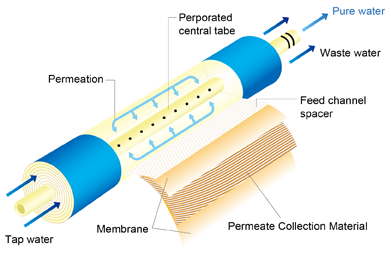
Reverse osmosis (RO) is a water purification technology that uses a semipermeable membrane to remove particles and ions from drinking water. This membrane technology is not considered a proper filtration method. In reverse osmosis, an applied pressure is used to overcome osmotic pressure, a colligative property that is driven by chemical potential, a thermodynamic parameter.
Reverse osmosis technique is widely applied in both industrial and residential aspects to remove molecules, ions, bacterial, virus and other toxicant. Ordinary water filters use a screen to separate only particles of dirt sediments from water. Reverse osmosis employs a semipermeable membrane that removes not only particles but also an extremely high percentage of dissolved contaminants-molecule by molecule- from raw tap water.
